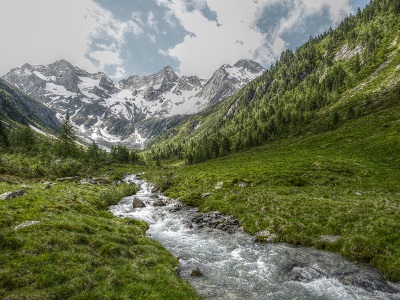Gauging the impact of climate change on mountain water resources

Related topics
Agriculture & Forestry Environment & climate action Innovation Societal Challenges Austria France Germany Italy Spain United Kingdom Switzerland Environment Chile Kyrgyzstan Argentinadate: 20/04/2015
Project: Assessment of Climatic change and impact...
acronym: ACQWA
See also: CORDIS
The quality and quantity of water from glaciers, permafrost and snowfall in mountain areas not only affects ecosystems and populations nearby but also has a profound effect on lowland areas, so much so that the Alps, for example, have been described as the ‘water tower of Europe’. Mountain water resources feed rivers that supply more densely populated areas, and they support natural ecosystems, underpin agricultural irrigation and feed hydroelectric power stations. Locally, entire industries thrive from tourists attracted to the snow-covered peaks.
But by 2050, regions such as the Alps, the Andes in Chile and the Tian Shan range in Central Asia could have less snow, while winter snow will likely melt sooner in the spring and glaciers will recede with potentially widespread environmental and socio-economic effects. Those are among the key findings of an international consortium of 37 universities, research institutes and companies that analysed the impact of climate change on mountain water resources over five years in the EU-funded ACQWA project.
“Future shifts in temperature and precipitation patterns, and changes in the behaviour of snow and ice in many mountain regions will change the quantity, seasonality, and possibly also the quality of water originating in mountains and uplands,” the ACQWA team notes. “As a result, changing water availability will affect both upland and populated lowland areas. Economic sectors such as agriculture, tourism or hydropower may enter into rivalries if water is no longer available in sufficient quantities or at the right time of the year.”
Modelling the future of Alpine snow and ice
Using state-of-the-art modelling techniques, the ACQWA partners studied the various interacting elements of the climate system, including regional atmospheric processes in complex terrain, snow and ice, vegetation and hydrology in order to project shifts in water regimes in a warmer climate in diverse mountain regions.
In the Alps, for example, the models found that a predicted 1°C to 2°C increase in annual temperatures between now and 2050, leading to less snowfall and more rain, will affect hydropower generation and water supplies for agriculture in lowland valley areas, particularly during the summer months. Avalanches and slope instabilities such as landslides, rock falls and debris flows will also increase in mountain areas, while lowland areas will face higher risks of downstream flooding as snowfall melts faster in spring and glaciers recede.
These findings – and others from research in the Chilean Andes and Kyrgyzstan – were used by the ACQWA team to quantify the environmental, economic and social impacts of changing water resources. They found that current water governance strategies in Europe and elsewhere are likely to be inadequate if the models prove accurate, and that more effective strategies will be needed to offset the most negative effects and deal with the uncertainty of future water supplies from mountain regions.
“There is a clear need for a more integrated and comprehensive approach to water use and management,” the ACQWA team says. “As an example, it is unclear whether current EU water policies are consistent with energy, agriculture and other industrial policies.”
The ACQWA research is an important step toward changing that situation, and, in the long term, helping populations and industries adapt to the effects of a changing climate on crucial water resources.
